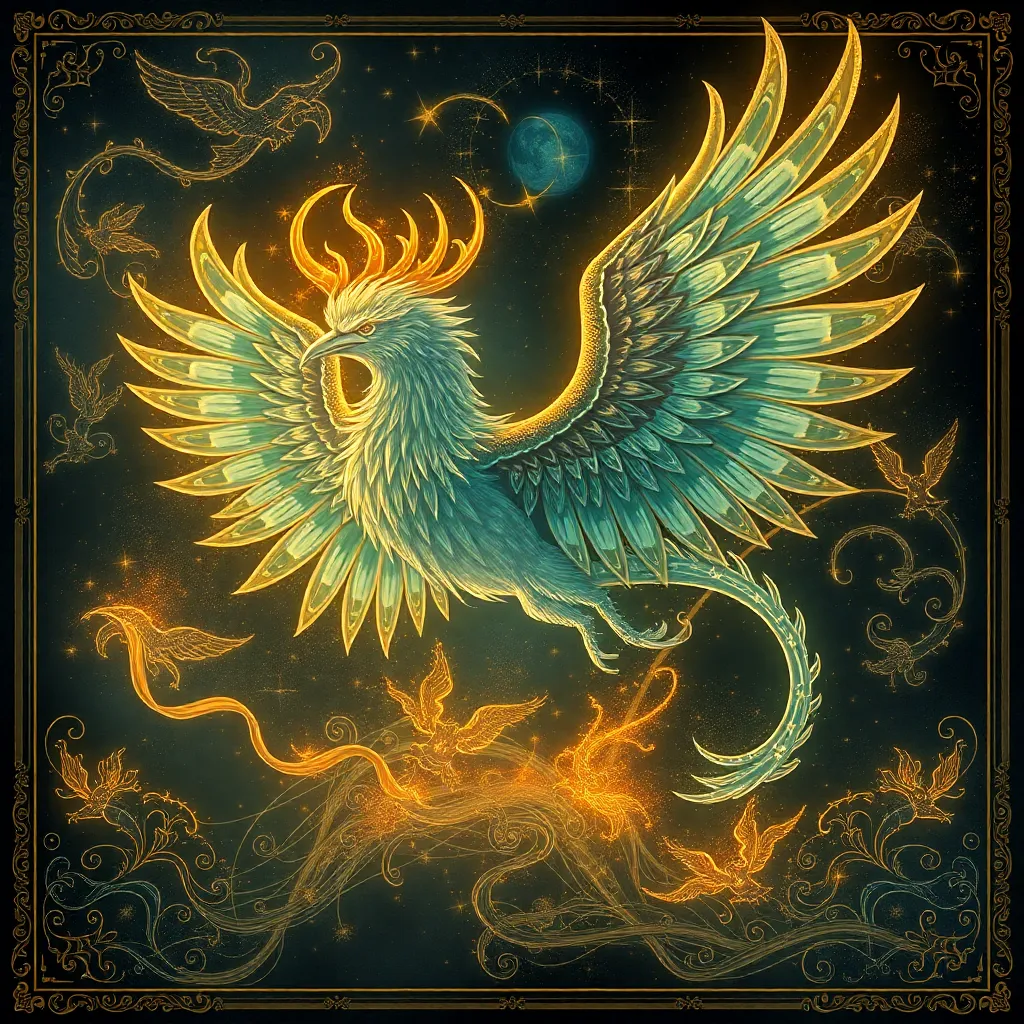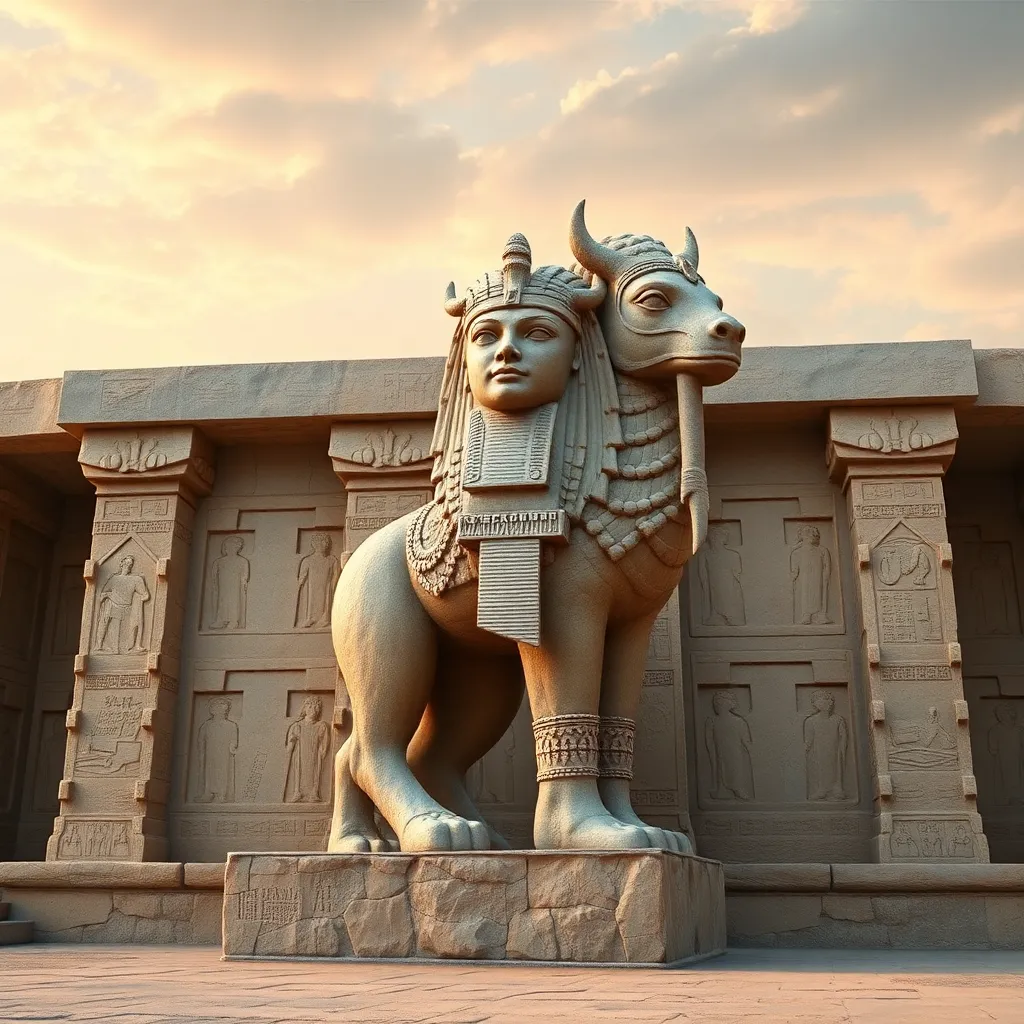The Simurgh’s Song: Echoes of Wisdom in Persian Folklore
I. Introduction
The Simurgh is a mythical bird in Persian mythology, often depicted as a majestic creature with a combination of various bird and animal features. This legendary being embodies wisdom and serves as a symbol of enlightenment, making it a central figure in Persian folklore.
The significance of the Simurgh’s song extends beyond mere entertainment; it resonates deeply within the cultural context, acting as a vehicle for wisdom and moral lessons. In many narratives, the Simurgh’s song represents a call to unity, love, and spiritual awakening.
This article aims to explore the origins, symbolism, and narratives associated with the Simurgh, as well as its contemporary relevance and enduring legacy in both Persian culture and the broader philosophical discourse.
II. The Origin and Evolution of the Simurgh
The origins of the Simurgh can be traced back to ancient Persian texts, where it appears as a powerful and benevolent force. In these early narratives, the Simurgh is often associated with the divine and is depicted as a guardian of wisdom.
In Zoroastrianism, the Simurgh symbolizes the connection between the earthly realm and the divine. It is often seen as a representation of the cosmic order, embodying both creation and the maintenance of harmony in the universe.
Over the ages, the depiction of the Simurgh has transformed in Persian literature and art. From ancient texts to modern interpretations, the Simurgh has adapted while retaining its core essence as a symbol of wisdom and enlightenment.
III. Symbolism of the Simurgh
The Simurgh is rich in symbolism, representing various aspects of life and the universe. Some key representations include:
- Wisdom and Knowledge: The Simurgh is often portrayed as a teacher, imparting wisdom to those who seek it.
- Duality of Creation and Destruction: While the Simurgh is a creator, it also embodies the destructive forces necessary for renewal and growth.
- Bridge Between Earthly and Divine: The Simurgh serves as a mediator, connecting humanity with the divine realm.
IV. The Song of the Simurgh: Themes and Motifs
In Persian folklore, music and song play a vital role in storytelling and cultural expression. The Simurgh’s song is an essential aspect of its identity, encapsulating profound themes and motifs. Key themes in the Simurgh’s song include:
- Unity: The song often emphasizes the importance of coming together as a community.
- Love: The Simurgh’s song expresses the deep emotional bonds that connect individuals to one another and to the universe.
- Quest for Enlightenment: The song serves as a guide for those seeking spiritual growth and understanding.
When compared to other mythological songs, the Simurgh’s song stands out for its emphasis on collective experience and spiritual journey, resonating with themes found in various cultures worldwide.
V. The Simurgh’s Journey: Stories and Legends
Numerous tales featuring the Simurgh have emerged throughout Persian literature. One of the most notable is found in The Conference of the Birds by Attar, where the Simurgh serves as a symbol of the ultimate truth and the journey of self-discovery.
In this allegorical poem, a group of birds embarks on a quest to find the Simurgh, representing their search for enlightenment. The journey is fraught with challenges, reflecting the struggles of individuals in pursuit of higher knowledge.
The lessons derived from these stories often center around the importance of perseverance, unity, and the transformative power of wisdom. The Simurgh becomes not only a destination but also a guide for those willing to seek deeper truths.
VI. The Simurgh in Contemporary Culture
In recent years, there has been a revival of interest in Persian folklore and mythology, with the Simurgh emerging as a significant figure in contemporary culture. This resurgence is evident in various forms of modern art, literature, and media.
The representation of the Simurgh has evolved, reflecting contemporary issues and themes. Artists and writers draw upon the rich symbolism of the Simurgh to express ideas of resilience, unity, and the quest for knowledge in today’s world.
Globalization has also influenced the perception of the Simurgh, allowing it to resonate with diverse audiences. As stories of the Simurgh spread beyond Persian culture, they contribute to a broader understanding of wisdom and the human experience.
VII. The Simurgh’s Legacy: Wisdom for Future Generations
The teachings of the Simurgh remain relevant today, offering insights into the nature of wisdom and knowledge. The themes embodied by the Simurgh encourage individuals to seek understanding and connection in their lives.
By inspiring modern philosophical discourse, the Simurgh serves as a reminder of the value of wisdom in navigating the complexities of life. Its legacy encourages individuals to embrace the journey of learning and growth.
Preserving and sharing folklore, including the stories of the Simurgh, is essential for maintaining cultural heritage. These narratives not only enrich our understanding of history but also provide valuable lessons for future generations.
VIII. Conclusion
In summary, the Simurgh plays a vital role in Persian folklore, symbolizing wisdom, unity, and the quest for enlightenment. Its song echoes through the ages, imparting lessons that resonate with the human experience.
The importance of wisdom and knowledge in cultural narratives cannot be overstated. The stories of the Simurgh remind us of the transformative power of these qualities in our lives.
As we explore the rich tapestry of Persian mythology, let us embrace the lessons of the Simurgh and seek to understand the wisdom it offers for our journeys ahead.



